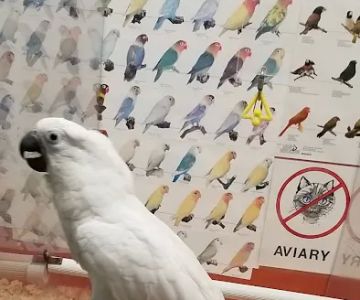Introduction: Why Do Dogs Chase Cars?
As a dog owner, you might have faced the challenge of a dog chasing cars. It's a common yet concerning behavior that many dogs exhibit, and it can be dangerous not only for your pet but also for others on the road. The first step in dealing with this issue is understanding why your dog is doing it. Chasing cars can be a result of excitement, fear, or territorial behavior. Some dogs view moving cars as prey, while others may just be trying to get attention. Regardless of the reason, it's essential to train your dog to stop this behavior before it escalates.

1946 S Christopher Columbus Blvd, Philadelphia, PA 19148, USA
See Details1. Understanding Your Dog’s Behavior
The first key to stopping your dog from chasing cars is understanding the root cause. A dog may chase cars because they are naturally curious, bored, or have too much energy. It can also be a sign of territorial behavior, where the dog feels the need to protect its space. Additionally, some dogs may chase cars because they are excited by the fast movement or the noise the car makes. Understanding the motivation behind the behavior will help tailor your training approach and determine the best strategy to address it.
2. Implementing Positive Reinforcement Training
Positive reinforcement is a powerful tool when training your dog. When your dog focuses on something other than chasing cars, immediately reward it with a treat or praise. For example, if your dog starts to look at a passing car but chooses not to chase it, reward this behavior. Over time, your dog will begin to associate ignoring cars with positive outcomes. The goal is to reinforce the desired behavior—calmness around cars—so your dog understands that it is more rewarding to stay calm than to chase the vehicle.
3. Leash Training and Control
One of the most effective ways to train your dog to stop chasing cars is through leash training. When walking your dog near roads or busy areas, always keep them on a leash. This allows you to have control over your dog’s movements and prevent them from darting towards a passing car. Use the leash to guide your dog’s attention away from the car and towards you. If your dog remains calm and focused on you, reward them immediately. Over time, they will learn to associate calm behavior with rewards.
4. Using Distractions to Redirect Attention
If your dog tends to fixate on cars, it's essential to have a distraction ready to redirect their attention. Carry toys, treats, or even a portable water bowl when walking your dog near busy streets. As soon as you see a car approaching, distract your dog with something more interesting. This helps to break the focus on the car and encourages your dog to ignore it. You can also teach your dog a "watch me" command, where they look at you instead of the approaching car. Reward them with praise or a treat whenever they do this successfully.
5. Providing Mental and Physical Stimulation
A bored dog is more likely to engage in undesirable behaviors, including chasing cars. To prevent this, ensure that your dog gets plenty of mental and physical stimulation. Regular exercise, puzzle toys, and interactive games are essential for keeping your dog occupied and mentally sharp. A tired dog is less likely to chase cars because they will have expended their energy on more productive activities. Additionally, incorporating structured playtime and obedience training into their daily routine can help them learn better focus and impulse control.
6. Seeking Professional Help if Needed
If your dog continues to chase cars despite your best efforts, it may be time to seek professional help. A certified dog trainer with experience in behavior modification can work with you and your dog to address the issue. In some cases, chasing cars can be a symptom of deeper behavioral issues, such as anxiety or fear. A professional trainer can help identify the cause and develop a customized training plan to address the problem effectively. Remember, patience and consistency are key when dealing with stubborn behaviors like car chasing.
Conclusion: Ensuring Your Dog’s Safety
Training your dog to stop chasing cars is essential for their safety and the safety of others. By understanding your dog's behavior, using positive reinforcement, implementing leash training, and providing mental stimulation, you can successfully redirect their attention away from moving vehicles. Remember to be patient, consistent, and proactive in your approach. If necessary, seek the help of a professional trainer to ensure the best outcome. Keeping your dog safe on walks and preventing dangerous habits like car chasing is a responsibility every dog owner should take seriously.










